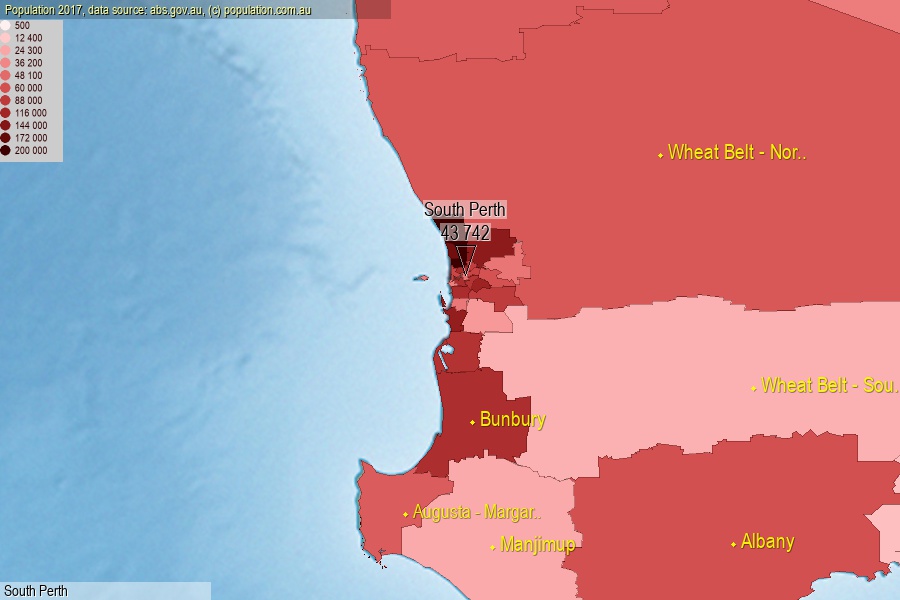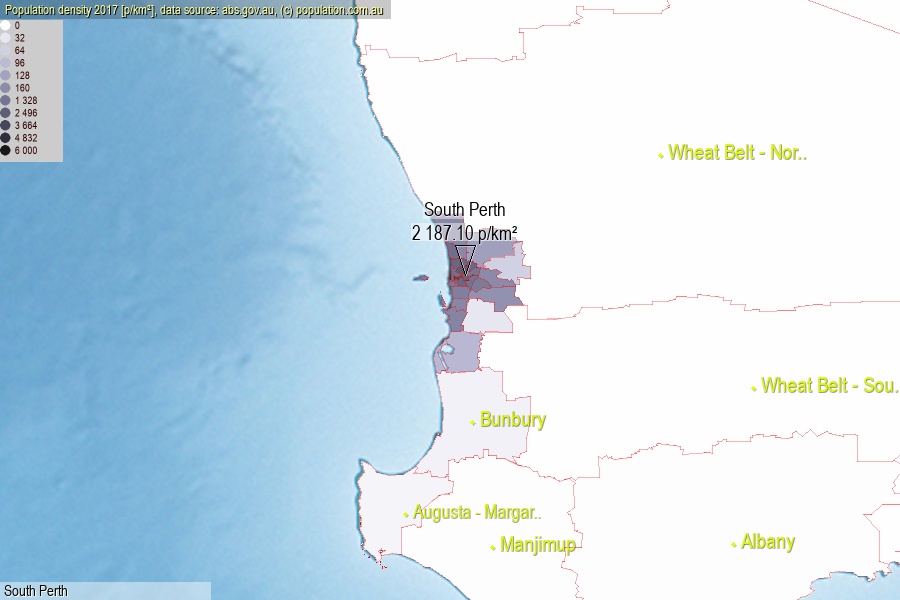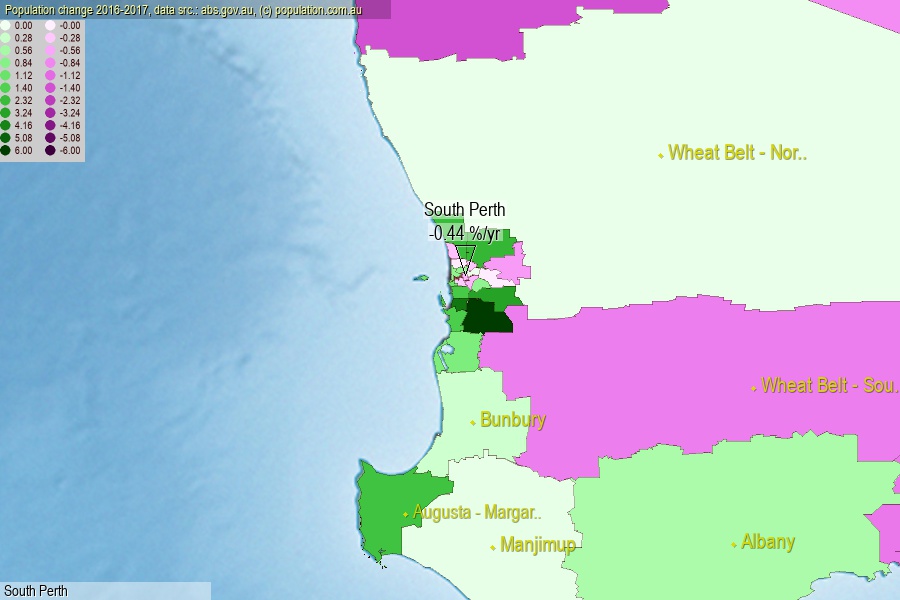 population.com.au
population.com.auLast official estimated population of South Perth (as Statistical Area Level 3) was 43 742 people (on 2017-06-30)[2]. This was 0.18% of total Australian population and 1.688% of WA population. Area of South Perth is 20.00 km², in this year population density was 2 187.10 p/km² . If population growth rate would be same as in period 2016-2017 (-0.44%/yr), South Perth population in 2025 would be 42 221. [0]



Click to enlarge. South Perth is located in the center of the images.
Population [people], population density [p./km²] and population change [%/year] [2]
View borders » (new window) [4]
[1991-1992] +0.66 %/Y
[1992-1993] -0.52 %/Y
[1993-1994] +0.34 %/Y
[1994-1995] +0.85 %/Y
[1995-1996] +1.57 %/Y
[1996-1997] +0.55 %/Y
[1997-1998] +0.55 %/Y
[1998-1999] +0.84 %/Y
[1999-2000] +0.51 %/Y
[2000-2001] +0.71 %/Y
[2001-2002] +2.05 %/Y
[2002-2003] +1.63 %/Y
[2003-2004] +1.36 %/Y
[2004-2005] +1.43 %/Y
[2005-2006] +1.25 %/Y
[2006-2007] +1.70 %/Y
[2007-2008] +2.28 %/Y
[2008-2009] +1.84 %/Y
[2009-2010] +0.14 %/Y
[2010-2011] +1.46 %/Y
[2011-2012] +1.05 %/Y
[2012-2013] +0.57 %/Y
[2013-2014] -0.22 %/Y
[2014-2015] -0.35 %/Y
[2015-2016] -0.49 %/Y
[2016-2017] -0.44 %/Y
[0] Calculated with linear interpolation from officially estimated population
[1] Read more about SA3 and Australian Statistical Geography Standard (ASGS) on abs.gov.au
[2] Population data from Australian Bureau of Statistics (Population and density: 2017; change: 2016-2017)
[3] Digital Boundaries: Australian Statistical Geography Standard (ASGS) 2016.
[4] Border coordinates are simplifyed using Ramer-Douglas-Peucker algorithm.